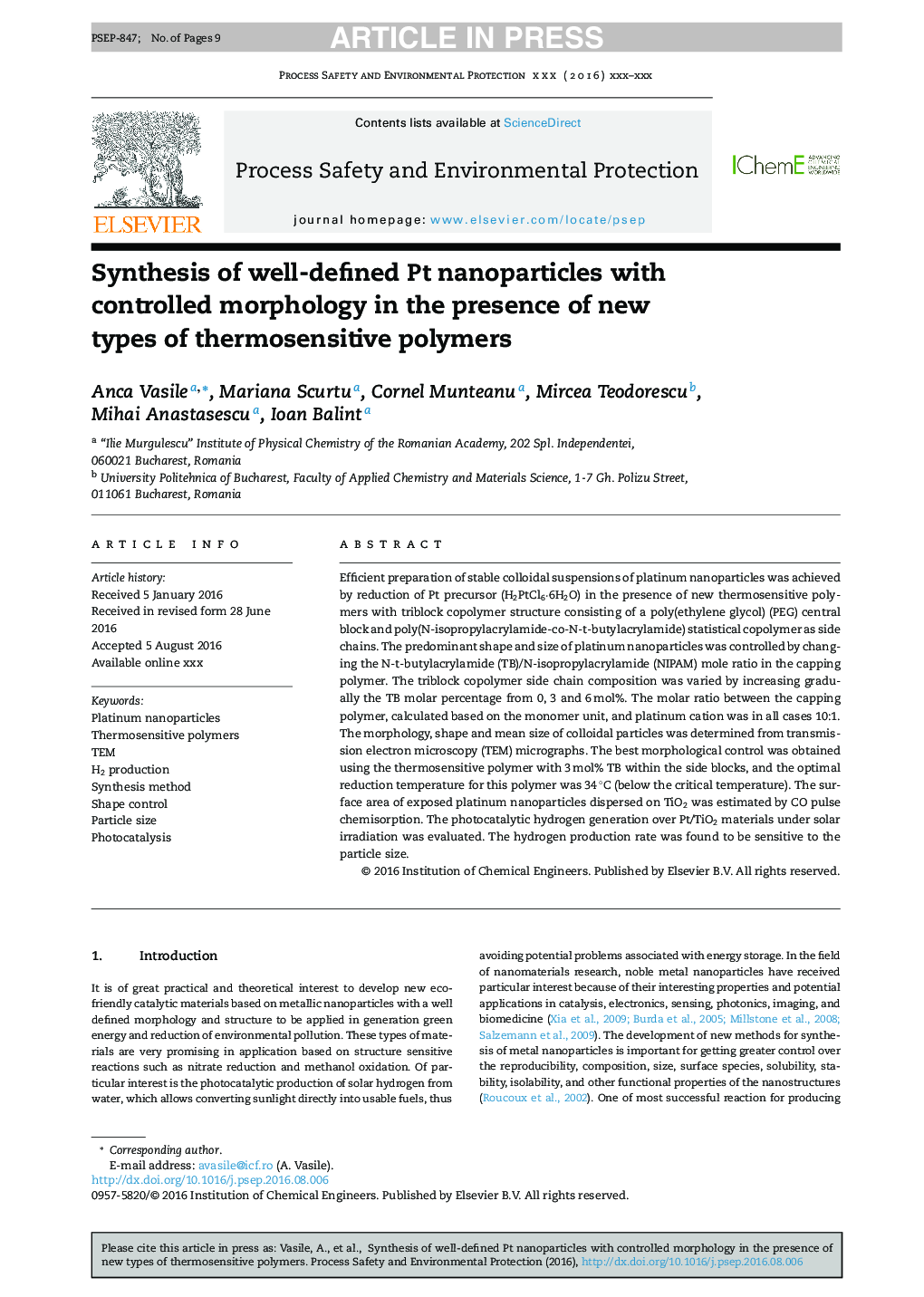| Article ID | Journal | Published Year | Pages | File Type |
|---|---|---|---|---|
| 4980743 | Process Safety and Environmental Protection | 2017 | 9 Pages |
Abstract
Efficient preparation of stable colloidal suspensions of platinum nanoparticles was achieved by reduction of Pt precursor (H2PtCl6·6H2O) in the presence of new thermosensitive polymers with triblock copolymer structure consisting of a poly(ethylene glycol) (PEG) central block and poly(N-isopropylacrylamide-co-N-t-butylacrylamide) statistical copolymer as side chains. The predominant shape and size of platinum nanoparticles was controlled by changing the N-t-butylacrylamide (TB)/N-isopropylacrylamide (NIPAM) mole ratio in the capping polymer. The triblock copolymer side chain composition was varied by increasing gradually the TB molar percentage from 0, 3 and 6 mol%. The molar ratio between the capping polymer, calculated based on the monomer unit, and platinum cation was in all cases 10:1. The morphology, shape and mean size of colloidal particles was determined from transmission electron microscopy (TEM) micrographs. The best morphological control was obtained using the thermosensitive polymer with 3 mol% TB within the side blocks, and the optimal reduction temperature for this polymer was 34 °C (below the critical temperature). The surface area of exposed platinum nanoparticles dispersed on TiO2 was estimated by CO pulse chemisorption. The photocatalytic hydrogen generation over Pt/TiO2 materials under solar irradiation was evaluated. The hydrogen production rate was found to be sensitive to the particle size.
Keywords
Related Topics
Physical Sciences and Engineering
Chemical Engineering
Chemical Health and Safety
Authors
Anca Vasile, Mariana Scurtu, Cornel Munteanu, Mircea Teodorescu, Mihai Anastasescu, Ioan Balint,
